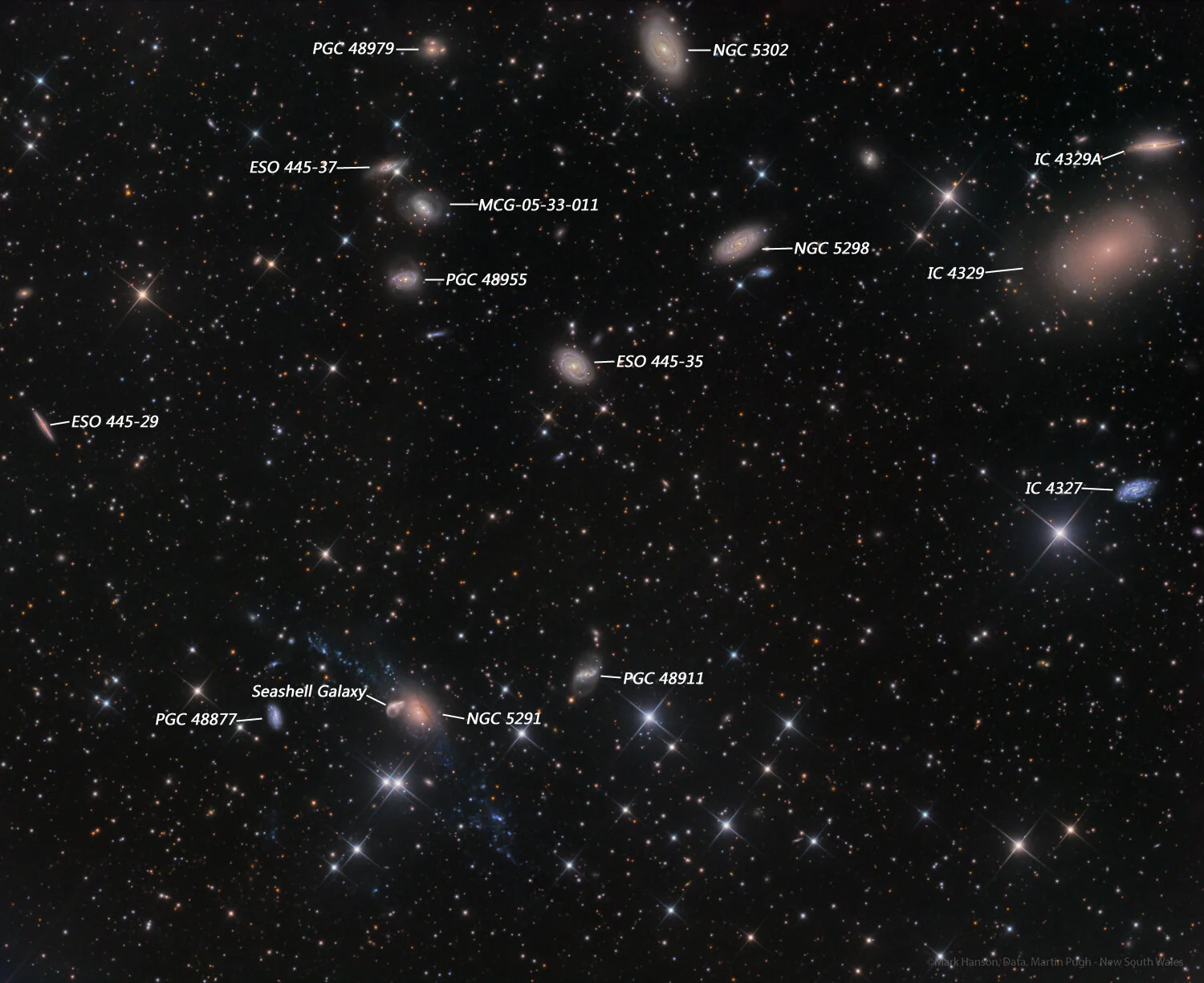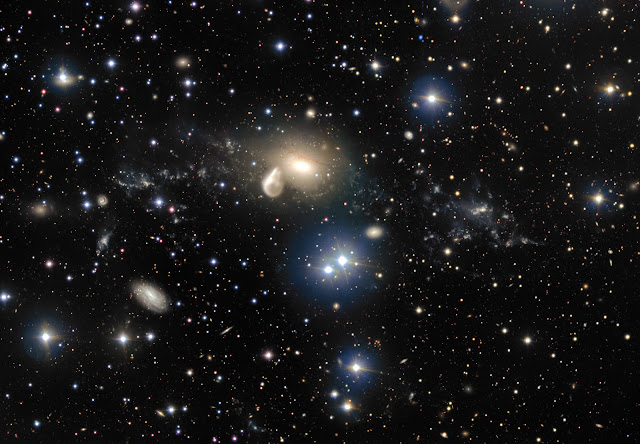Messier Marathon by Remote Telescopes ( extra: NGC etc)
梅西耶 馬拉松 之 遠端天文台 版本
Messier marathon is an attempt, usually organized by amateur astronomers, to find as many Messier objects as possible during one night. The Messier catalogue was compiled by French astronomer Charles Messier during the late 18th century and consists of 110 relatively bright deep-sky objects (galaxies, nebulae, and star clusters).
梅西耶 馬拉松 ( Messier Marathon ) 是在一夜內尋找到儘可能多,或儘可能完成全部110個梅西耶天體的活動。
https://zh.wikipedia.org/zh-tw/%E6%A2%85%E8%A5%BF%E7%88%BE%E9%A6%AC%E6%8B%89%E6%9D%BE
梅西耶目錄 是法國天文學家梅西耶在18世紀編輯的,總共有110個相對較明亮的深空天體(星系、星雲和星團)。
https://zh.wikipedia.org/wiki/%E6%A2%85%E8%A5%BF%E8%80%B6%E5%A4%A9%E4%BD%93%E5%88%97%E8%A1%A8
https://zh.wikipedia.org/wiki/%E6%A2%85%E8%A5%BF%E8%80%B6%E5%A4%A9%E9%AB%94
網路上的 遠端天文台,裡面設置 天文望遠鏡, 可以用網路遠端控制,做 天文攝影。
這種方案已經發展多年了,各種功能與介面也越來越純熟了。
遙控望遠鏡(遠端天文台) ( 草山星空 )
https://astrotracer.blogspot.com/2016/07/itelescope.html
我個人因為工作忙碌勞累,不容易參加實體的梅西耶馬拉松,於是就興起一個興趣,想用遠端天文台來拍攝梅西耶深空天體,希望可以在一年,或三年內完成全部110個梅西耶天體。
想稱之為:
梅西耶 馬拉松 之 遠端天文台 版本
預計使用 iTelescope 與 Telescope Live
** CCD 的 LRBG 或 HSO 原始影像 使用 DDS (2020年) 或 CCDStack 疊合 (2023年)
Messier Marathon by Remote Telescopes
Messier Marathon by Remote Telescopes (M1-M9)
Messier Marathon by Remote Telescopes (M10-M19)
Messier Marathon by Remote Telescopes (M20-M29)
Messier Marathon by Remote Telescopes (M30-M39)
Messier Marathon by Remote Telescopes (M40-M49)
Messier Marathon by Remote Telescopes (M50-M59)
Messier Marathon by Remote Telescopes (M60-M69)
Messier Marathon by Remote Telescopes (M70-M79)
Messier Marathon by Remote Telescopes (M80-M89)
Messier Marathon by Remote Telescopes (M90-M99)
Messier Marathon by Remote Telescopes (M100-M110)
Extra:
NGC Omega Centauri, and other Objects ( Omega Centauri NGC )
IC, Barnard, Sh2, Caldwell etc
Astrophotography by Web Remote Telescopes 網路天文攝影 初體驗 (再體驗) + 觀測紀錄
https://en.wikipedia.org/wiki/Double_Cluster
The Double Cluster (also known as Caldwell 14) consists of the open clusters NGC 869 and NGC 884 (often designated h Persei and χ (chi) Persei, respectively), which are close together in the constellation Perseus. Both visible with the naked eye, NGC 869 and NGC 884 lie at a distance of about 7,500 light years in the Perseus Arm of the Milky Way galaxy.
https://zh.wikipedia.org/zh-tw/%E9%9B%99%E6%98%9F%E5%9C%98
雙星團(也稱為科德韋爾14)是裸眼可見的疏散星團NGC 869和 NGC 884(經常被錯誤的稱為英仙座h和χ,其實h是鄰近的一顆恆星,而χ就是這兩個星團)的合稱[1],在英仙座內靠得很近。NGC 869和NGC 884 兩者至地球的距離都是7,600光年[2]。NGC 869的質量約為3,700太陽質量,而NGC 884的質量大約是2,800太陽質量;然而後來的研究顯示這兩個星團有很多的暈星環繞著,所以它們的總質量至少是20,000太陽質量[3]。依據對個別恆星的研究,這兩個星團相對來說都很年輕,大約都只有1,280萬歲[4]。相較之下,昴宿星團的年齡估計是7,500萬至15,000萬歲。這兩個星團各自都有300顆以上的藍白色超巨星。這兩個星團都有藍移,NGC 869以39 km/s(24 mi/s)接近地球,NGC 884也以相似的速度,38 km/s(24 mi/s)朝向地球接近[5]。星團中最熱主序星的光譜類型是B0。
2023-10-24 Seestar S50 4 min @ New Taipei, Taiwan
iTelescope T68 Celestron RASA 11" 280mm ZWO ASI2600C Color 150 sec x2 2023-06-22
NASA: The Double Cluster in Perseus
https://science.nasa.gov/double-cluster-perseus
NGC 2170 , Sh2-106
Angel Nebula ( 天使星雲 )
https://en.wikipedia.org/wiki/NGC_2170
NGC 2170 is a reflection nebula in the constellation Monoceros. It was discovered on October 16, 1784 by William Herschel.
https://en.wikipedia.org/wiki/Sh2-106
Sh2-106,[2] also known as the Celestial Snow Angel, is an emission nebula and a star formation region in the constellation Cygnus. It is a H II region estimated to be around 2,000 ly (600 pc) from Earth, in an isolated area of the Milky Way.
https://zh.wikipedia.org/zh-tw/NGC_2170
NGC 2170 是麒麟座的一個面積相當大的反射星雲。它離地球的距離約為2400光年,整個星雲的直徑大約有15光年。從地球上看上去這個星雲像一幅水彩畫:它有藍色的(比較明亮的)反射部分,也有紅色的(比較暗的)放射部分。該星雲由威廉·赫歇爾發現於1784年10月16日。
每日一天文圖 (天使星雲 )
http://sprite.phys.ncku.edu.tw/astrolab/mirrors/apod/ap190826.html
Caldwell 49, NGC 2244
Rosette Nebula ( 玫瑰星雲 )
https://en.wikipedia.org/wiki/Rosette_Nebula
The Rosette Nebula (also known as Caldwell 49) is an H II region located near one end of a giant molecular cloud in the Monoceros region of the Milky Way Galaxy. The open cluster NGC 2244 (Caldwell 50) is closely associated with the nebulosity, the stars of the cluster having been formed from the nebula's matter.
https://zh.wikipedia.org/zh-tw/%E7%8E%AB%E7%91%B0%E6%98%9F%E9%9B%B2
玫瑰星雲(也稱為科德韋爾49 )是一個大的球形電離氫區(外觀呈現圓形),位置在麒麟座,是銀河系內的一個巨大分子雲接近末端的部分。 疏散星團NGC 2244(科德韋爾50)內的恆星是由這個星雲的物質形成的,因此與這個星雲緊密的結合。
2023-11-04 Seestar S50 30 min @ New Taipei, Taiwan
NGC 2359 Thor's Helmet ( 索爾的頭盔 )
https://en.wikipedia.org/wiki/NGC_2359
NGC 2359 (also known as Thor's Helmet) is an emission nebula[3] in the constellation Canis Major. The nebula is approximately 3,670 parsecs (11.96 thousand light years) away and 30 light-years in size.
https://zh.wikipedia.org/zh-tw/NGC_2359
NGC 2359(也稱為雷神的頭盔)是位於大犬座的一個發射星雲[3]。 這個星雲的距離大約是3,670秒差距(11,960光年),大小約30光年。
iTelescope T33 2024-03-13
RGB 240 sec x 2 各 240 秒 疊加 2 組 (北方朝右) ( North at Right )
T33
NGC 3532 Open Cluster ( 疏散星團 )
https://en.wikipedia.org/wiki/NGC_3532
NGC 3532 (Caldwell 91),[8] also commonly known as the Pincushion Cluster,[9][10][11][8] Football Cluster,[12][13] the Black Arrow Cluster[14] and the Wishing Well Cluster,[4][5][6][7] is an open cluster some 405 parsecs from Earth[2] in the constellation Carina. Its population of approximately 150 stars of 7th magnitude or fainter includes seven red giants[15] and seven white dwarfs.[16][17] On 20 May 1990 it became the first target ever observed by the Hubble Space Telescope.
https://zh.wikipedia.org/zh-tw/NGC_3532
NGC 3532,也稱為許願井星團或科德韋爾91,是位於船底座的一個疏散星團。它得到這樣的名稱是因為透過望遠鏡的目鏡觀察,它看起來像 在許願井底閃耀著的數打銀幣。
在大約1,321[2]光年的距離上,有著將近150顆亮度7等和更暗的恆星,使它成為哈伯太空望遠鏡在1990年5月20日開始觀測時的第一個目標。南十字座的十字架三 (南十字座β) 和十字架四 (南十字座δ)約略的指向NGC 3532,它位於南十字座和巨大但較暗淡的偽十字星群之間。
iTelescope T69 2023-05-10
color 240 sec x 3 各 240 秒 疊加 3 組 (北方朝右) ( North at Right )
T69
NGC 5128 Centaur A ( 半人馬座 A )
https://en.wikipedia.org/wiki/Centaurus_A
Centaurus A (also known as NGC 5128 or Caldwell 77) is a galaxy in the constellation of Centaurus. It was discovered in 1826 by Scottish astronomer James Dunlop from his home in Parramatta, in New South Wales, Australia.
https://zh.wikipedia.org/zh-tw/%E5%8D%8A%E4%BA%BA%E9%A6%AC%E5%BA%A7A
半人馬座A,也稱為NGC 5128,是位於半人馬座內距離大約1千4百萬光年遠的一個透鏡星系。它是最靠近地球的電波源之一,也是被專業天文學家廣泛研究的活躍星系核[3]。這個星系也是全天第五亮的星系,所以即使這個星系只能在南半球和北半球的低緯度地區看見,它依然還是業餘天文學家的理想目標[4]。 相對論性噴流的能量被相信是從在星系核心的超大質量黑洞附近的空間噴射出來的,輻射出X射線和無線電波的波長。以十年間隔對噴流進行的電波觀察,天文學家確定噴流內側部分的移動速度達到光速的一半。X射線則是噴流內的高能微粒在更遠處與周圍的氣體碰撞所產生的。
2023-04-22 iTelescope T33
L 120 sec ( L 120 秒 )
NGC 5139 Omega Centauri 奧米加 星團
2023-03-17 iTelescope T10 ( 但這組沒設好,拍成 LRGL ,少拍一組 藍光 )
2023-03-17 iTelescope T10 L 180 sec x2 ( L 3 分鐘 疊加 2 張 )
2023-03-17 iTelescope T10 RG 120 sec x 2 RG 紅綠 各 2 分鐘 疊加
T10 高橋 Takahashi TOA-130 ( 5吋鏡,這支 天文望遠鏡 報價大約新台幣 23萬元 )
我拍上面那組影像,大約用了新台幣 750元。
Telescope Live CHI-1-CCD Imaging: 2021-05-17 Processing: 2023-04-25
RGB 600 sec x2
CHI-1-CCD2023-04-25 iTelescope Live CHI-1
CHI-1-CMOS L 300 sec L 300 秒
CHI-1
NGC 5298 - NGC 5291 Group of Galaxies
https://www.hansonastronomy.com/ngc-51
( The above link shows a very beautiful group of galaxies in Centaur. But with Copyright. )
https://en.wikipedia.org/wiki/NGC_5291
NGC 5291 ( Group of Galaxies )
https://www.eso.org/public/images/eso1547a/NGC 5298 ( Group of Galaxies )
https://bs.wikipedia.org/wiki/NGC_5298
http://sprite.phys.ncku.edu.tw/astrolab/mirrors/apod/ap151121.html
NGC 6302 Bug Nebula (Planetary Nebula 行星狀星雲)
https://zh.wikipedia.org/zh-tw/NGC_6302
iTelescope T33 2023-03-17 T33 RGB 120 sec x 3
RGB 各 2 分鐘 疊加 3 組 (南方朝上) ( South Up )
Telescope Live Imaging: 2022-04-17, Processing: 2023-04-28
HSO 600 sec x 5 各 600秒 疊加 5 組







.jpg/1280px-Star-forming_region_S106_(captured_by_the_Hubble_Space_Telescope).jpg)






















.jpg?format=1500w)
















沒有留言:
張貼留言